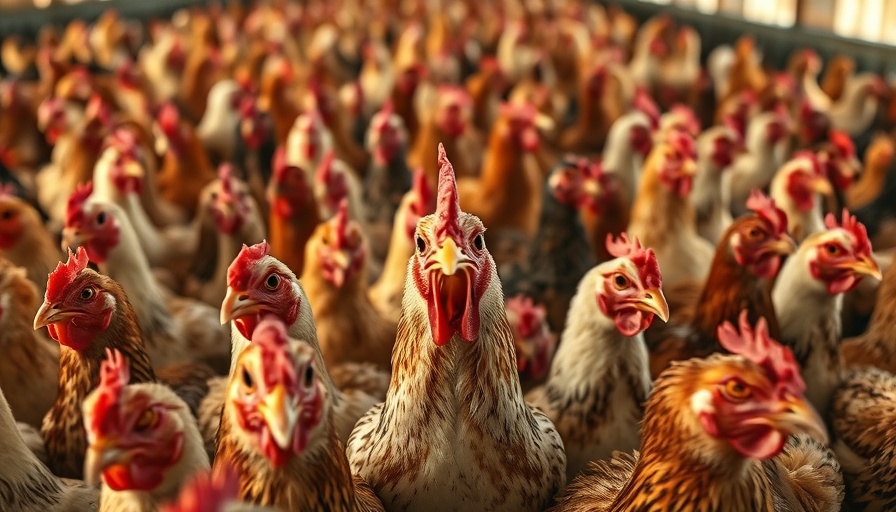
Why Bird Flu is a Growing Concern
In January 2025, the U.S. faced an alarming situation as around 20 million birds, primarily egg-laying hens, fell victim to the highly pathogenic avian influenza (H5N1). This staggering number signifies just a fraction of the broader threat that bird flu poses to not only poultry farming but also global health. If not confronted now, experts warn this virus could lead to a pandemic far deadlier than the 1918 influenza or COVID-19.
The Dangers of Bird Flu: A Historical Context
Understanding the past helps us navigate the present. The 1918 influenza pandemic, deemed the most deadly in history, claimed millions of lives. The World Health Organization (WHO) reported that this outbreak killed more individuals in one year than both the Bubonic plague and AIDS combined in its peak years. Revisiting this grim history underscores the potential severity of H5N1, which may have origins linked to avian flu. In fact, researchers suggest that all pandemic influenza viruses have roots traceable back to bird flu, reinforcing the urgent need for vigilance and preventive measures.
The Unconventional Threat of H5N1
Although somewhat less well-known than seasonal flu strains, H5N1 flaunts a terrifying lethality rate; it kills about 50% of human victims, unlike the average 5% mortality from the 1918 strain. Public health authorities, including the CDC and WHO, have expressed grave concerns about the potential for H5N1 to evolve and spread rapidly among humans, posing risks akin to Ebola's deadliness combined with a highly contagious virus. Security experts even argue that the only conceivable catastrophe that could yield more casualties would be thermonuclear war.
Could H5N1 Become the Next Pandemic?
The link between bird flu and human health has been a matter of discussion for decades. The profound similarities between outbreaks among birds and sporadic human infections present a worrying scenario. Experts warn that H5N1's future could be dictated by mutations that allow it to transmit between humans, which emphasizes the importance of preventive measures. Each day that passes without alertness heightens the risk of pandemic scenarios that could endanger billions of lives.
Understanding Prevention and Preparedness
Preventive strategies can vary from one person to another. Here’s how communities can better tackle the threat of bird flu:
- Education: Raising awareness about bird flu symptoms and transmission can empower individuals to take action timely.
- Personal Hygiene: Emphasizing personal hygiene, including regular hand washing and using masks in crowded places, much like during the COVID-19 pandemic, can mitigate the spread.
- Group Efforts: Communities are encouraged to collaborate with local health departments to monitor bird populations and respond swiftly to outbreaks, ensuring food safety and public health.
Lessons from History: What Can Be Done Now?
As we remember the past, let’s use that knowledge to educate ourselves on current health risks. The lessons from the 1918 pandemic teach us two critical things: one, the importance of timely response, and two, the interconnectedness of our health—animal and human alike. The historical backdrop emphasizes the necessity of maintaining a watchful eye on avian populations and fostering collaboration with health organizations to ensure community safety.
Staying Informed: Why Knowledge is Power
In an era of misinformation, being informed is more paramount than ever. Regularly consulting health resources and news updates concerning bird flu can help individuals and communities stay a step ahead of any potential outbreak. Knowing the realities can lead to actions such as buying food responsibly and supporting policies that advocate for animal health, which ultimately promotes human health.
In light of the alarming trends around bird flu, it's crucial to take a proactive stance. Educate your community, share these insights, and encourage healthy practices that will matter in the face of future threats. Together, we can turn knowledge into action to protect ourselves and our loved ones from the dangers of emerging pathogens.
 Add Row
Add Row  Add
Add 




 Add Row
Add Row  Add
Add 

Write A Comment